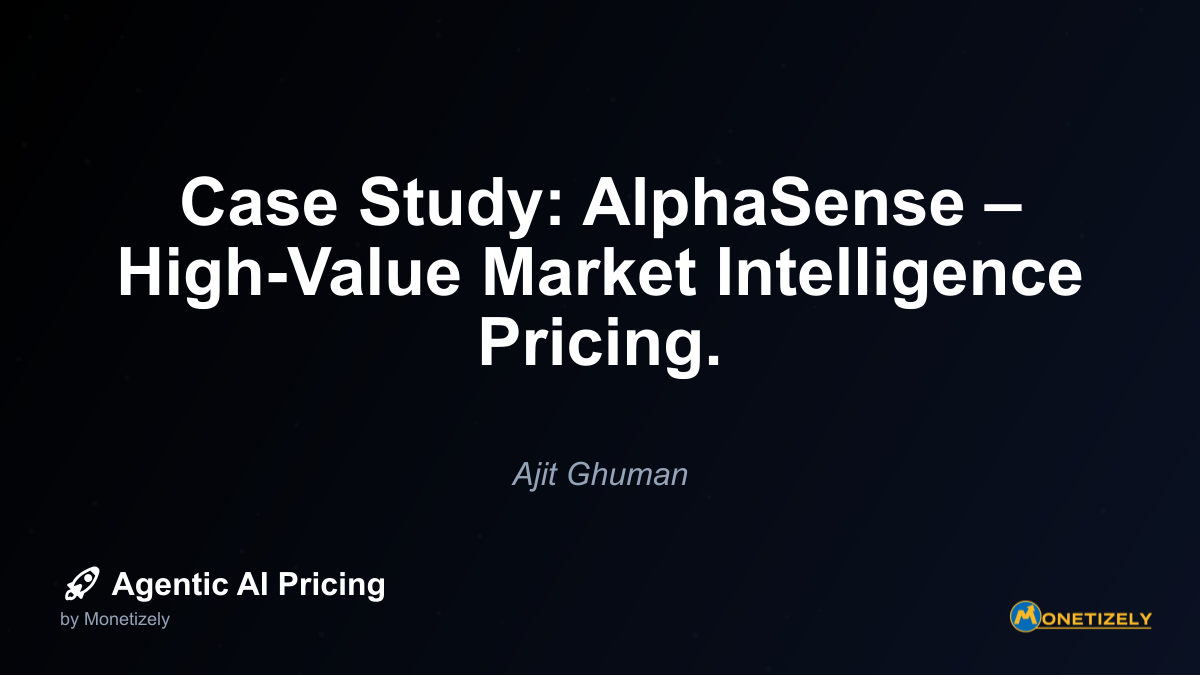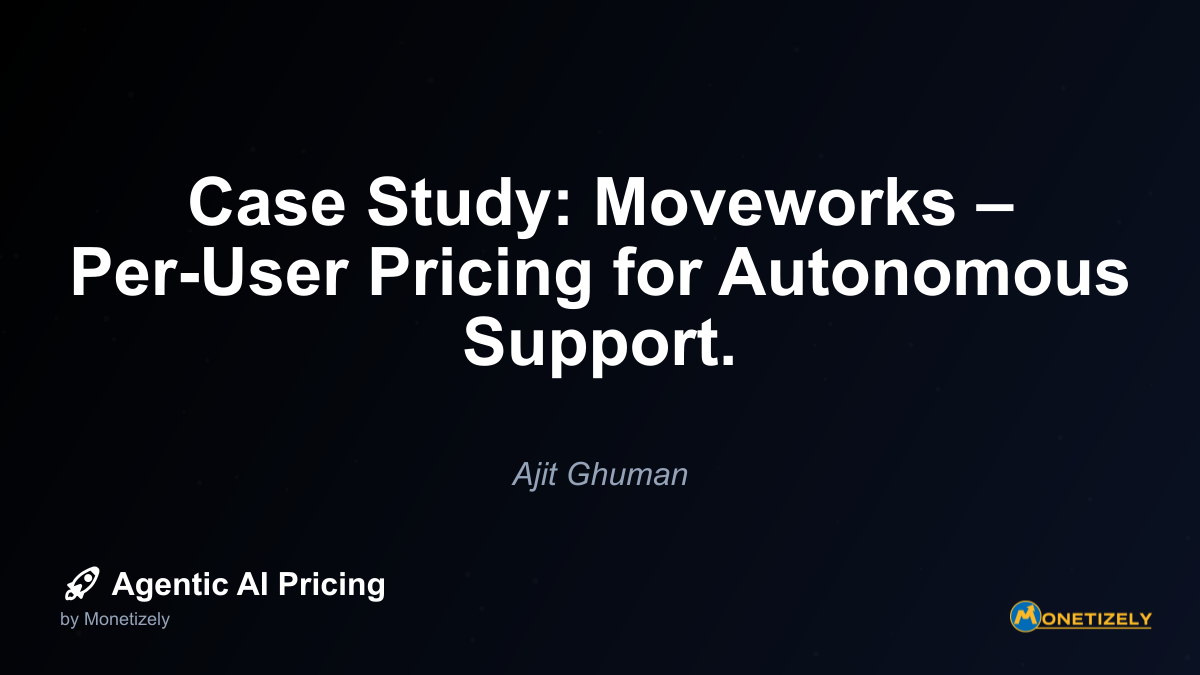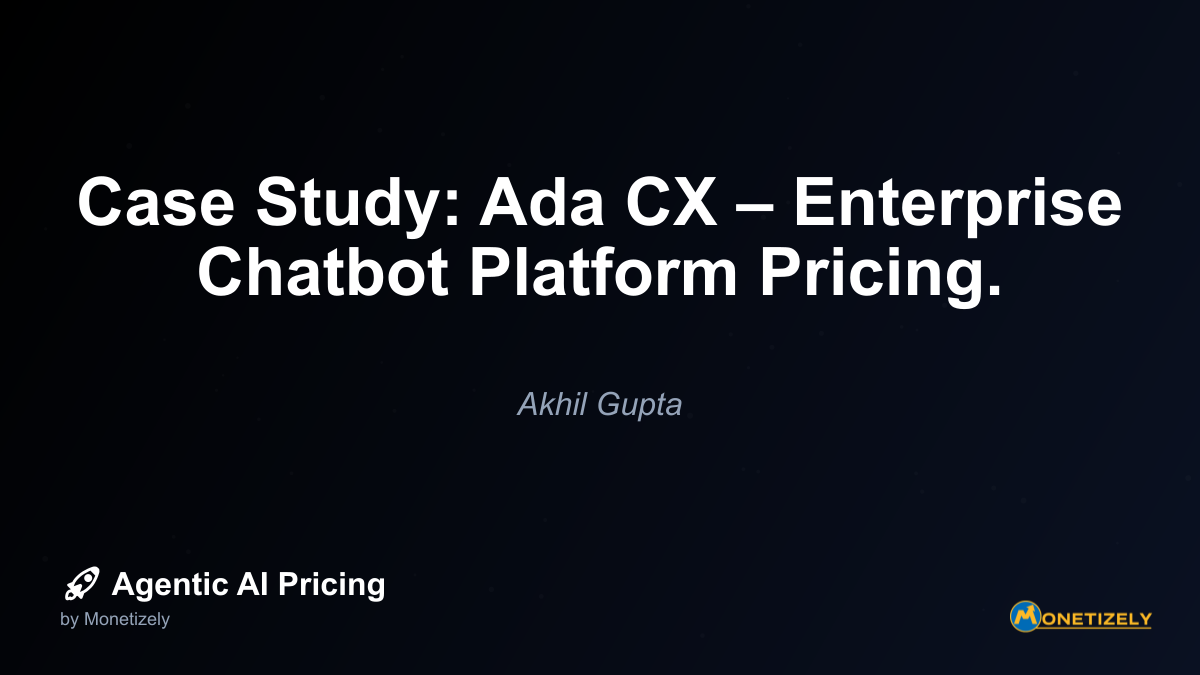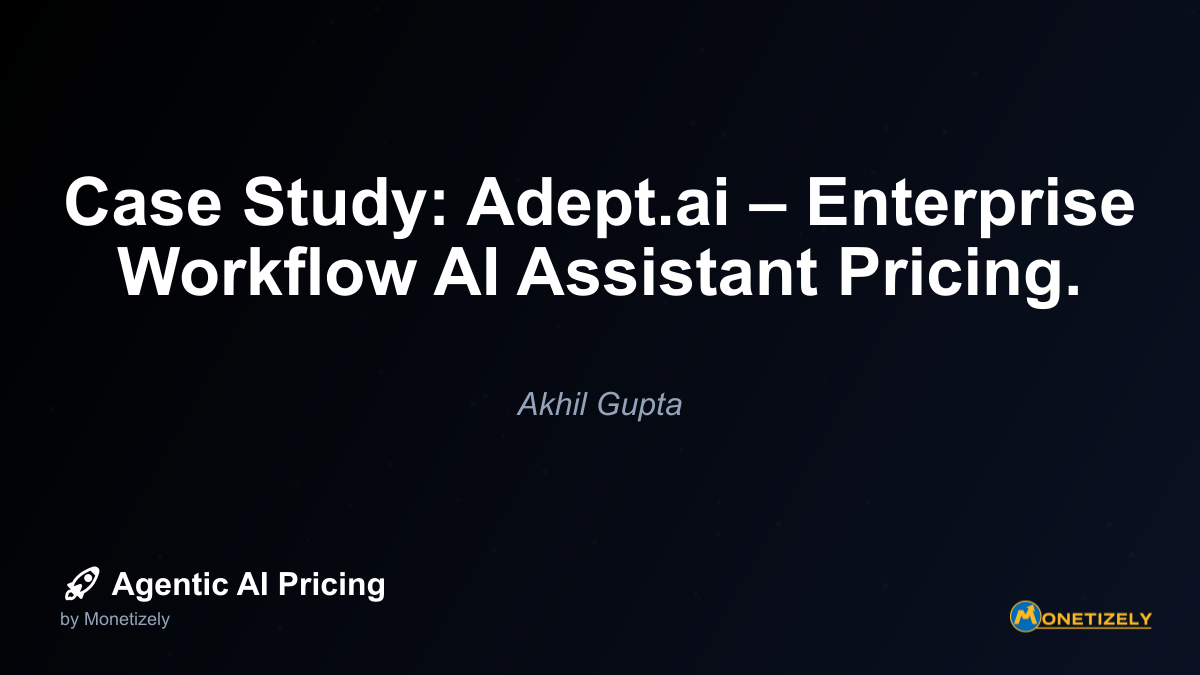· Ajit Ghuman · Case Studies · 6 min read
Case Study: AlphaSense – High-Value Market Intelligence Pricing.
AI and SaaS Pricing Masterclass
Learn the art of strategic pricing directly from industry experts. Our comprehensive course provides frameworks and methodologies for optimizing your pricing strategy in the evolving AI landscape. Earn a professional certification that can be imported directly to your LinkedIn profile.

Key Factors Enabling AlphaSense’s Premium Pricing Strategy
AlphaSense’s ability to maintain premium pricing in a competitive market stems from several strategic advantages that offer valuable lessons for agentic AI pricing more broadly:
1. AI Quality Differentiation
Unlike many AI applications where quality differences can be subtle, AlphaSense’s search algorithms demonstrate measurable superiority in:
- Precision - Returning fewer irrelevant results that waste user time
- Recall - Finding obscure but critical mentions that competitors miss
- Context Understanding - Recognizing industry-specific terminology and relationships
- Learning Capabilities - Improving results based on user interactions and feedback
This clear quality differentiation creates defensible pricing power, as customers can directly observe the superior performance compared to alternatives or manual methods.
2. Content Exclusivity
Beyond technology, AlphaSense has secured exclusive or preferred access to high-value content sources, creating data moats that competitors struggle to replicate:
- Partnerships with premium research providers
- Historical archives digitized with proprietary processing
- Expert networks with transcribed insights
- International content with specialized translation capabilities
This content exclusivity creates significant switching costs for users who come to rely on these information sources, further supporting premium pricing.
3. Network Effects Within Organizations
As more users within an organization adopt AlphaSense, the platform’s value increases through:
- Shared annotations and insights
- Collaborative workspaces
- Organizational knowledge capture
- Consistent information access across departments
These network effects create organizational lock-in that reduces price sensitivity over time, as the cost of switching to an alternative grows with expanded usage.
Enterprise Pricing Lessons from AlphaSense’s Model
Value-based pricing models for agentic AI can draw several critical lessons from AlphaSense’s approach:
1. Segmentation Based on Decision Impact
AlphaSense prices according to the value of decisions its platform influences rather than simply the cost of delivering the service. This approach recognizes that identical technology delivers vastly different value when used for:
- Multi-billion dollar investment decisions
- Corporate strategy development
- Competitive intelligence gathering
- Regulatory compliance monitoring
By aligning pricing with decision value rather than delivery cost, AlphaSense captures a fair share of the value it creates.
2. Expansion Through Module Addition
Rather than forcing customers into all-or-nothing packages, AlphaSense enables gradual expansion through modular content and feature additions. This approach:
- Lowers initial adoption barriers
- Creates natural upsell opportunities
- Allows customization to specific use cases
- Enables value demonstration before full commitment
This modular approach has become increasingly common in agentic AI pricing, allowing for progressive value capture as customers experience benefits.
3. Enterprise-Wide Value Articulation
AlphaSense’s enterprise agreements succeed because they articulate value beyond individual user productivity, emphasizing:
- Organizational knowledge consistency
- Cross-functional alignment
- Reduced duplication of research efforts
- Institutional memory preservation
By connecting individual productivity gains to enterprise-wide outcomes, AlphaSense justifies higher total contract values than would be possible through individual seat aggregation alone.
Implementation Challenges in High-Value AI Pricing
Despite its success, AlphaSense’s pricing model faces several challenges that reveal broader tensions in premium AI pricing:
1. Value Attribution Complexity
While financial professionals intuitively understand the value of better information, precisely attributing outcomes to the platform remains challenging:
- Did a successful investment result from AlphaSense insights or would it have happened anyway?
- How much time did the platform actually save versus alternative methods?
- What portion of a strategic decision’s value should be attributed to the information tool?
These attribution challenges create ongoing pressure to demonstrate ROI, particularly during budget reviews.
2. User Adoption Friction
High per-seat costs create organizational friction that can limit expansion:
- Departmental budget constraints may limit access to only senior team members
- Occasional users may not justify full license costs
- Training requirements create additional hidden costs
- User interface complexity can reduce perceived value for less technical users
AlphaSense addresses these challenges through tiered access models and extensive onboarding support, but user adoption remains a constant challenge for premium-priced AI tools.
3. Competitive Displacement Threats
As AI technology becomes more democratized, AlphaSense faces potential disruption from:
- Lower-cost alternatives with improving capabilities
- Open-source large language models that can process financial documents
- Internal tools built by large institutions leveraging general AI platforms
- Specialized vertical competitors focusing on specific use cases
Maintaining premium pricing requires continuous innovation to stay ahead of these displacement threats.
How AlphaSense’s Pricing Model Informs Broader Agentic AI Strategy
The AlphaSense case study provides several transferable insights for pricing agentic AI solutions across industries:
1. Value-Based Pricing Anchors
Successful AI pricing strategies often anchor to established value metrics within an industry rather than cost-plus models. For financial information, this means pricing relative to:
- Professional time savings (analyst hourly rates)
- Decision value impact (percentage of assets under management)
- Competitive alternatives (other premium information services)
- Risk mitigation value (cost of regulatory violations or missed opportunities)
This value-anchoring approach transfers well to other domains where AI augments high-value professional work.
2. Multi-Dimensional Pricing Architecture
AlphaSense demonstrates that sophisticated AI pricing often requires multiple dimensions:
- User-based licensing (who can access the system)
- Content-based premiums (what information is available)
- Feature-based tiers (what capabilities are enabled)
- Volume-based discounting (how extensively the platform is used)
This multi-dimensional approach enables value capture across diverse customer segments while maintaining pricing integrity.
3. ROI Storytelling and Documentation
Premium AI pricing requires compelling ROI narratives supported by:
- Case studies from similar organizations
- Benchmark data comparing efficiency gains
- Total cost of ownership calculations
- Value realization methodologies
AlphaSense invests heavily in customer success teams that help clients document and communicate the platform’s value, justifying renewal and expansion decisions.
The Future of High-Value AI Pricing: Beyond AlphaSense
As agentic AI continues evolving, several emerging trends suggest how high-value pricing models might develop beyond AlphaSense’s current approach:
1. Outcome-Based Pricing Components
Future AI pricing may incorporate more explicit outcome-based elements:
- Success fees tied to measurable performance improvements
- Risk-sharing models where vendors participate in upside
- Performance guarantees with penalty provisions
- Value capture through revenue or profit sharing
These approaches align vendor and customer incentives while potentially increasing total value capture for truly transformative AI solutions.
2. Ecosystem Integration Premiums
As AI tools become more interconnected, pricing power may shift toward platforms that enable seamless ecosystem integration:
- API-based pricing for automated workflows
- Integration premiums for connecting to proprietary systems
- Data exchange capabilities across organizational boundaries
- Cross-platform agent coordination
AlphaSense has begun moving in this direction with its API offerings, recognizing that isolated intelligence has less value than integrated insights.
3. Hybrid Human-AI Service Models
The highest-value AI applications often combine algorithmic intelligence with human expertise:
- AI-augmented expert advisory services
- Human-in-the-loop quality assurance
- Specialized training for domain-specific applications
- Custom AI development for proprietary use cases
These hybrid models can command even higher premiums than pure technology solutions by addressing the limitations of current AI while delivering augmented human capabilities.
Conclusion: The AlphaSense Pricing Paradigm
AlphaSense demonstrates that in specialized domains where information directly impacts high-value decisions, AI-powered intelligence tools can command premium prices comparable to established information services. The company’s success stems from a sophisticated understanding of value creation in financial and corporate contexts, translating technological capabilities into measurable business outcomes.
For organizations developing agentic AI solutions, AlphaSense offers a valuable pricing blueprint that emphasizes:
- Value alignment - Pricing based on decision impact rather than delivery cost
- Modular expansion - Enabling progressive adoption and value demonstration
- Multi-dimensional structure - Capturing value across different usage patterns and needs
- ROI articulation - Providing clear value justification for premium pricing
As agentic AI continues evolving, these principles will likely remain foundational to successful high-value pricing strategies, even as specific mechanisms adapt to changing technological capabilities and market dynamics.
The AlphaSense case ultimately confirms that when AI delivers genuine, measurable value in high-stakes decision contexts, customers will pay premium prices that reflect that value—a principle that extends well beyond financial services to any domain where better information and insights drive better outcomes.
Co-Founder & CEO
Ajit is the author of Price To Scale, a top book on SaaS Pricing and is the Founder of Monetizely. Ajit has led and worked in pricing and product marketing at firms like Twilio, Narvar and Medallia. His work has been featured in Forbes and VentureBeat. Ajit regularly consults with software companies from Seed stage to post-IPO on pricing strategy. Ajit is also a highly-rated co-instructor for 'The Art of SaaS Pricing and Monetization' on Maven.
Pricing Strategy Audit
Let our experts analyze your current pricing strategy and identify opportunities for improvement. Our data-driven assessment will help you unlock untapped revenue potential and optimize your AI pricing approach.




